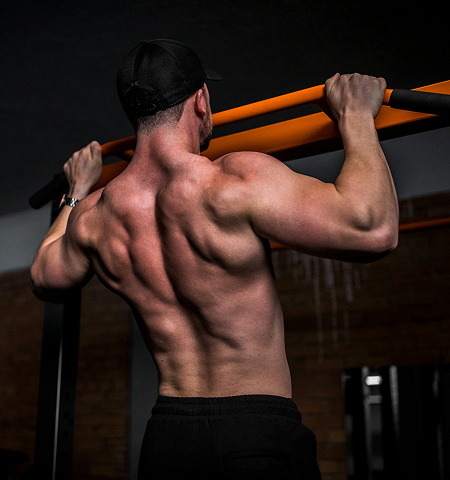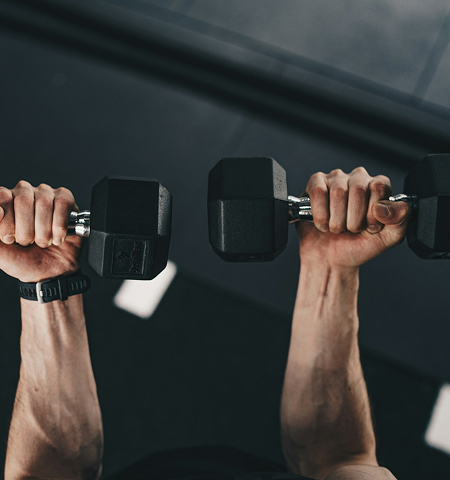How Your Body Burns Calories: More Than Just Exercise
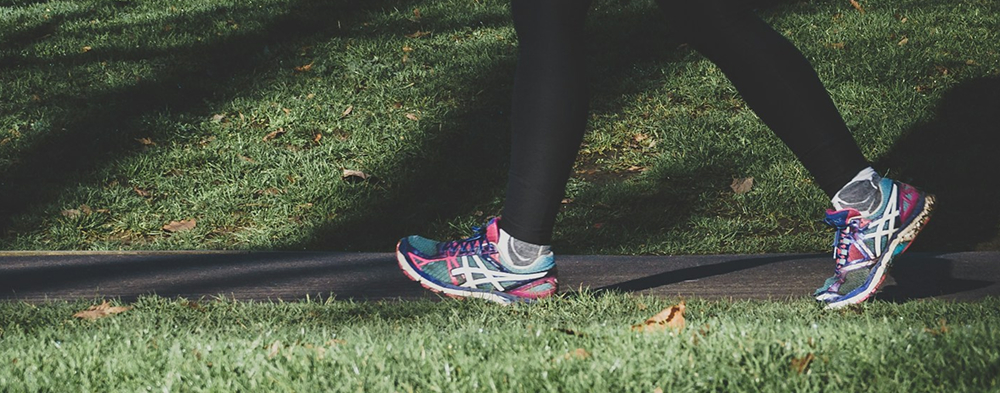
When most people (including my past self) think about burning calories, they immediately picture sweaty gym sessions, long runs, or high-energy classes. For a long time, I believed the only way to burn calories was through exercise. If I missed a workout, I’d often think, “What’s the point in eating well if I can’t even train?”
But here’s the truth: exercise only makes up a small part of the total calories you burn each day. In fact, most of your calorie burn happens without you even realising it. In this blog, I’ll break it down for you so you can see where your energy actually goes, and why missing a workout isn’t the disaster you might think it is.
Imagine Your Body as a 10-Storey Building
To make this easier to understand, picture a block of flats with 10 floors. Each floor represents a part of how your body burns calories. The building as a whole is your total daily calorie burn.
Floors 0–6: Basal Metabolic Rate (BMR)
This might surprise you, but around 70% of the calories you burn every day come from simply staying alive. Your basal metabolic rate (BMR) is the energy your body uses at rest for things like breathing, circulating blood, repairing cells, and keeping your brain ticking over. Speaking of which, your brain alone uses around 300–500 calories a day.
It’s important to note: this doesn’t mean that sitting around all day burns more calories. What it does mean is that your body is always working hard in the background, even when you don’t feel like you’re “doing” anything.
Understanding this can help reduce the guilt when you can’t make it to the gym. If you’re in a calorie deficit (say by reducing your intake by around 10% on the days you can’t train), you’re still making progress. This mindset shift has helped many of my clients avoid negative self-talk, which often leads to binging or giving up altogether.
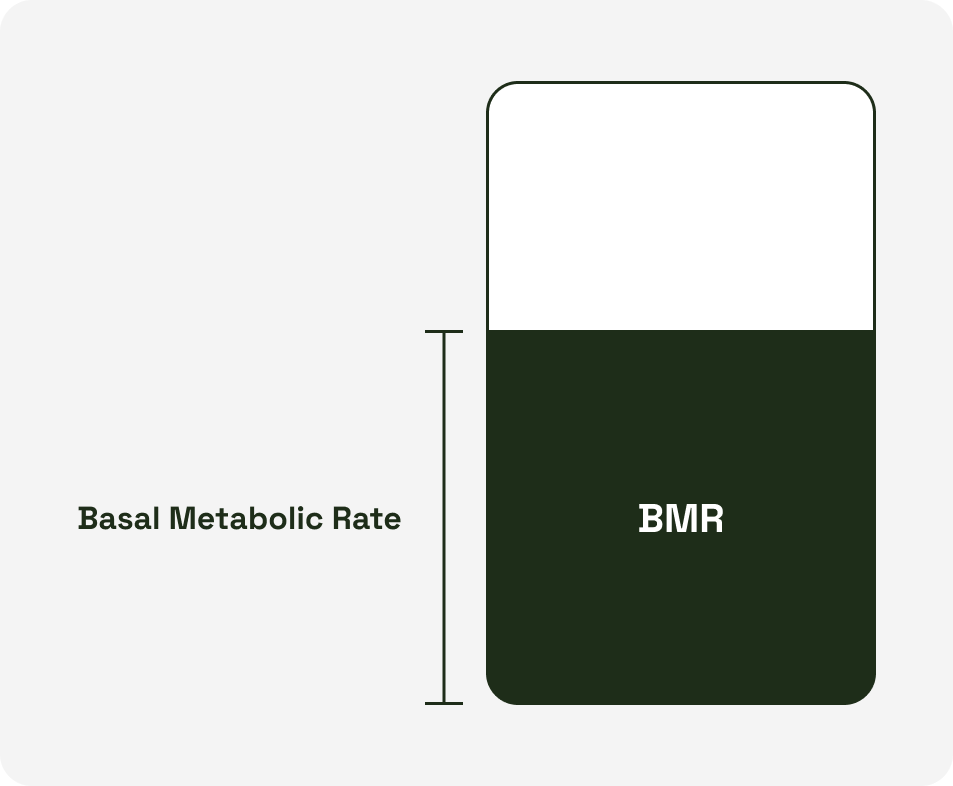
Floor 7: Exercise Activity Thermogenesis (EAT)
This is the planned exercise you do: gym sessions, a spin class, or your Saturday morning park run. Here’s the shocker — it usually only makes up around 10% of your daily calorie burn. For people who are extremely active, it might creep up to 20%, but for most of us, exercise plays a smaller role than we think.
I’ve seen clients believe they’re burning 500+ calories per workout, but the reality is often closer to 200. Exercise is brilliant for building strength, improving fitness, boosting mood, and developing confidence, but it’s not the only (or even the main) driver of fat loss.
This is exactly why missing a workout doesn’t undo your progress. The maths just doesn’t add up that way.
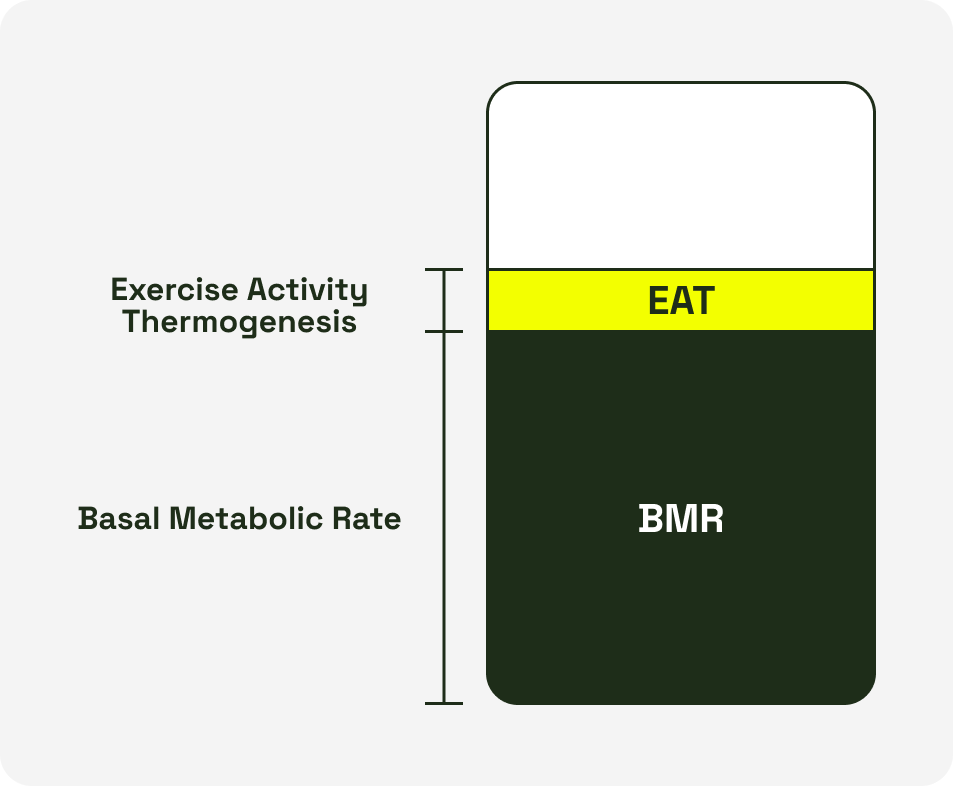
Floor 8: Thermic Effect of Food (TEF)
Here’s something you might not expect: eating food actually burns calories. The process of digesting and breaking down your meals requires energy, and this is called the thermic effect of food (TEF).
Different food groups burn different amounts:
- Protein requires the most energy to break down, which is one reason personal trainers often encourage a higher protein intake when dieting.
- Carbohydrates sit in the middle.
- Fats require the least energy to digest.
This explains why two people eating 1500 calories a day may see different results depending on their food choices. Someone who eats more protein will usually burn more calories during digestion compared to someone who eats mostly carbs or fats.
That said, don’t take this as advice to eat only protein. Protein isn’t an ideal energy source on its own, and balance is still key. But it does highlight how nutrition plays a bigger role in calorie burning than many realise.
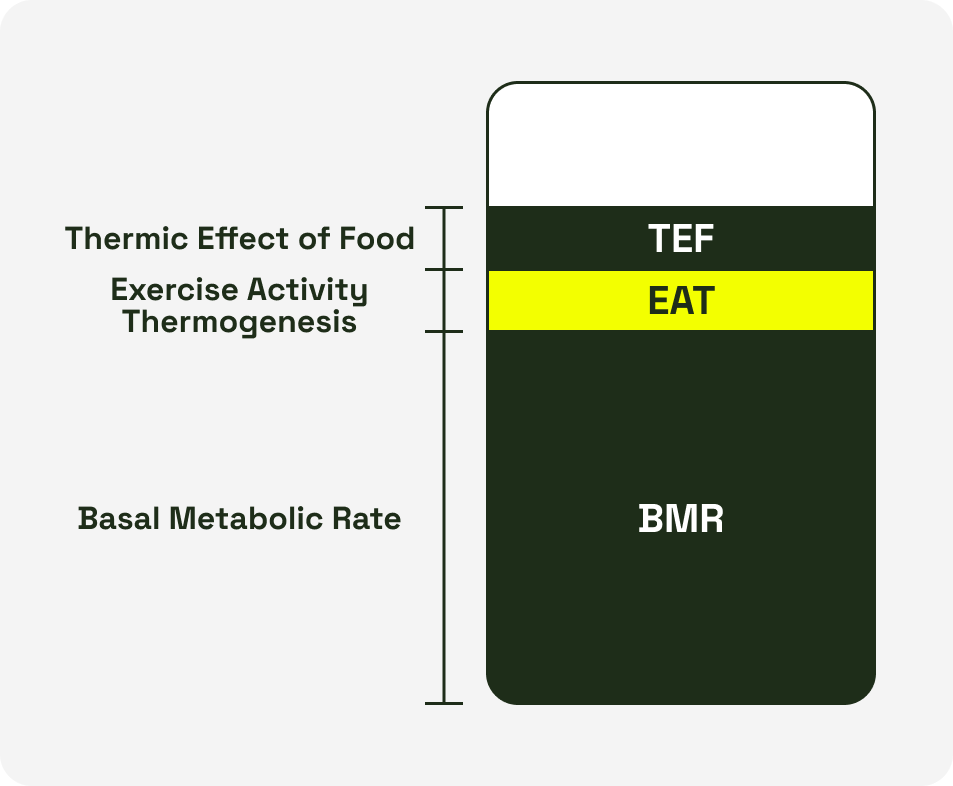
Floors 9 & 10: Non-Exercise Activity Thermogenesis (NEAT)
This one is huge — and often overlooked. Non-exercise activity thermogenesis (NEAT) is all the movement you do outside of formal exercise. Walking, standing, climbing stairs, fidgeting, even gardening or doing chores — it all counts.
Highly active people (again, not through workouts but daily movement) can burn up to three times more calories than someone who is sedentary. The problem in much of the Western world is that we’ve become more sedentary by default: desk jobs, cars, and lots of time sitting.
This is why I always ask clients about their life outside of training. Often, the biggest opportunity for change isn’t in adding another workout — it’s in making small, sustainable tweaks to their everyday routine.
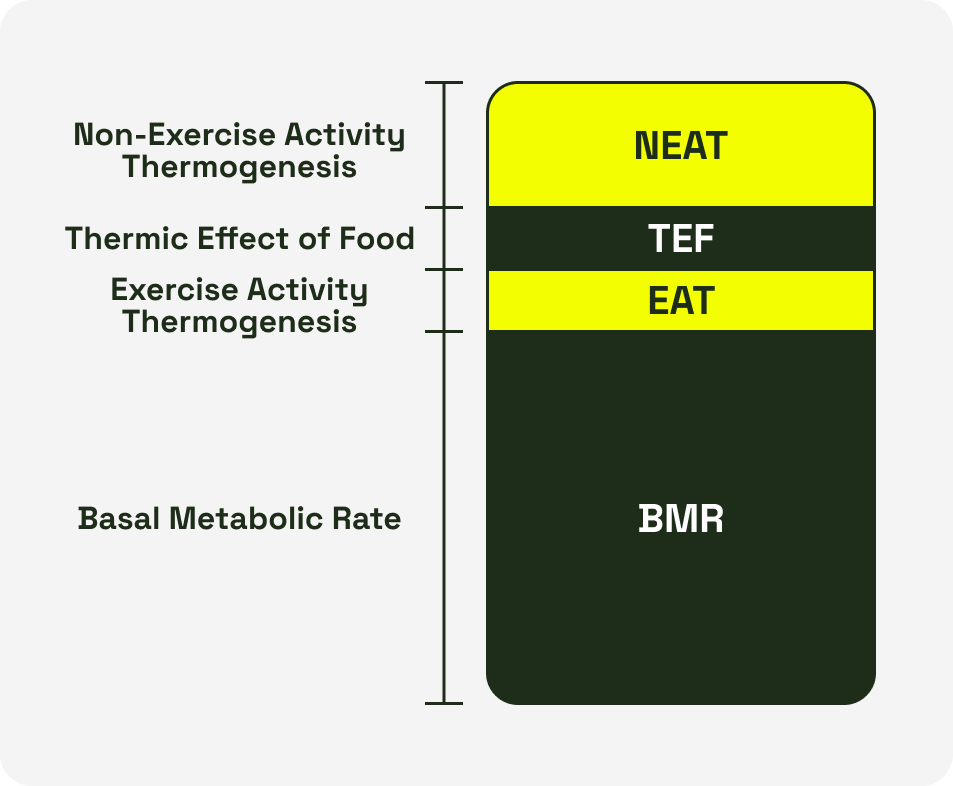
Simple Ways to Boost NEAT:
- Take the stairs instead of the lift.
- Park further away at the shops to get extra steps in.
- Walk around while chatting on the phone instead of sitting down.
- Meet a friend for a coffee walk instead of sitting in a café.
These may not sound groundbreaking, but over weeks, months, and years they add up massively. The best part? They’re easy to build into your lifestyle without feeling like a chore.
If you want a little extra accountability, most smartwatches track steps and stairs. While I wouldn’t rely on the calorie burn estimates (they can be very inaccurate), using step counts as a gentle nudge to move more can be really useful.
So, What Does This All Mean for Weight Loss?
If you can’t make it to the gym, it doesn’t mean you’ve failed. You’re still burning calories — a lot of them — simply by existing. By focusing on your diet, adding more daily movement, and understanding where your energy is really going, you can make consistent progress without putting pressure on yourself to train every single day.
For most people, combining sensible nutrition with small daily changes (like walking more) is far more effective than relying on exercise alone for fat loss. Training is still important for strength, confidence, and overall health — but it’s not the whole picture.
Final Thoughts
Next time you miss a workout or the weather stops you from running, don’t throw in the towel. Instead, ask yourself: “What else can I do today?” Maybe it’s a walk at lunch, maybe it’s cutting calories slightly, maybe it’s just being kind to yourself and getting back on track tomorrow.
Remember, your body is burning calories in more ways than you think. And the small, consistent actions you take each day really do add up.
Want Some Guidance?
If you’re looking to lose weight, build strength, or just feel more confident in your training, I’d love to help. At Plan-A Performance Coaching in Stourbridge, I work with clients 1-to-1 in my private facility and online through my coaching app. If you’d like support with your training and nutrition, feel free to get in touch.


.webp)
